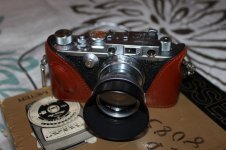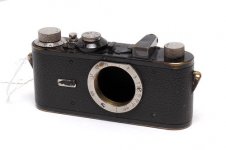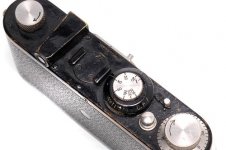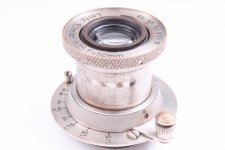I agree with Erik regarding the ring or mount. No clue about those odd lugs.
To make things worse it is possible, though unlikely, that the missing lens might have been a Hektor...
I think the fixed lens cameras have a different mount to film distance. I remember that certainly the earlier ones had the lens mounted
over machined vulcanite and were built accordingly.
Ages ago we had a thread about 'short' and 'long' 50mm Elmars that highlighted differences between fixed or converted and interchangeable lenses. Obvious a converted lens has the same mount to film distance as an interchangeable one, the differences being taken up in the mount.
Furthermore I haven't got anything to check it with but isn't the 'throw' of a fixed lens different from that of an interchangeable one? If so this would mean the helical's pitch was different.
Islandor has got a bit of a problem here. The solution would be to find a whole 'fixed' lens and mount. It will need shimming etc. He'll also need to find a hockey stick too but that is not essential.
Curiously, here's one but at that price and bearing in mind the condition of the camera (and this lens) I would think twice.
http://mwclassic.com/product/leitz-...for-leica-i-model-a-with-leica-i-flange-only/
Please correct me if I am wrong, don't want to start any internet myths!
Michael









